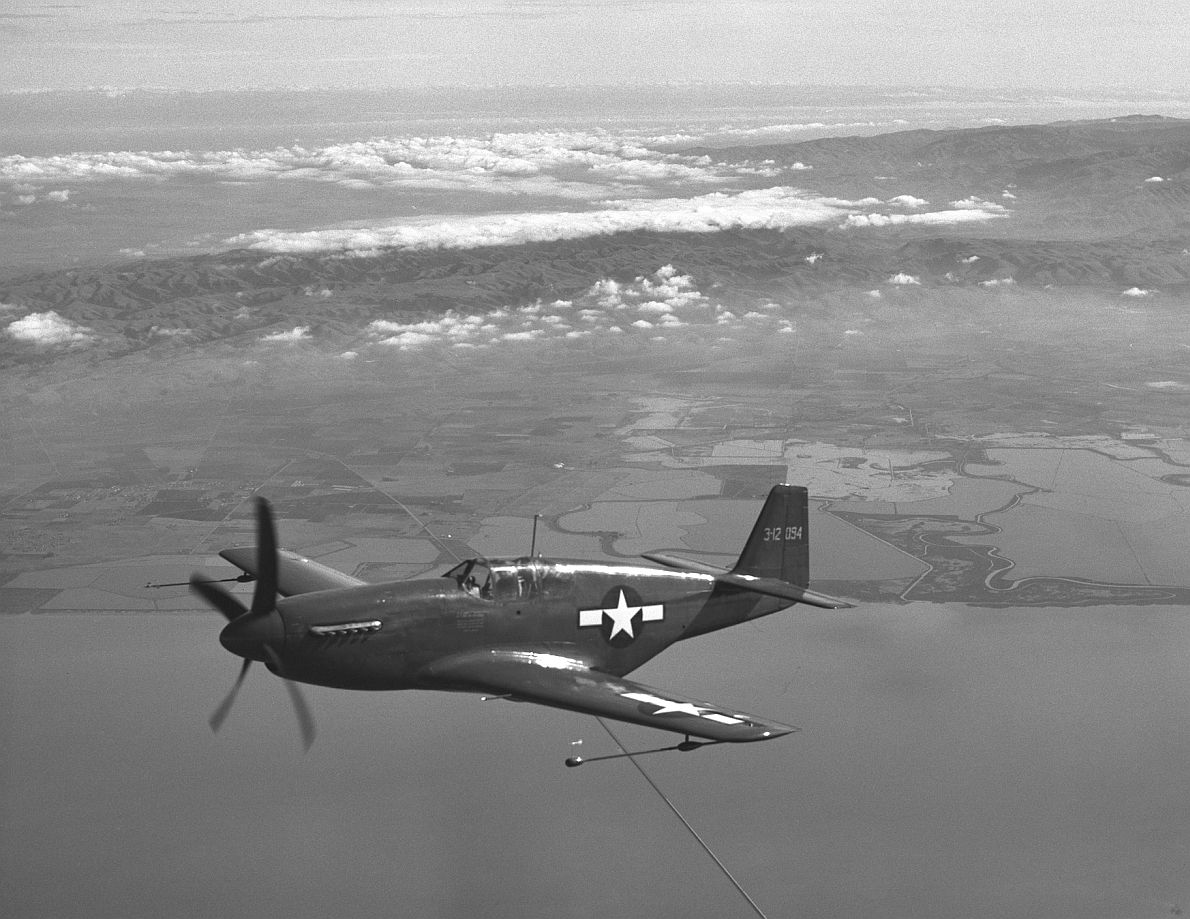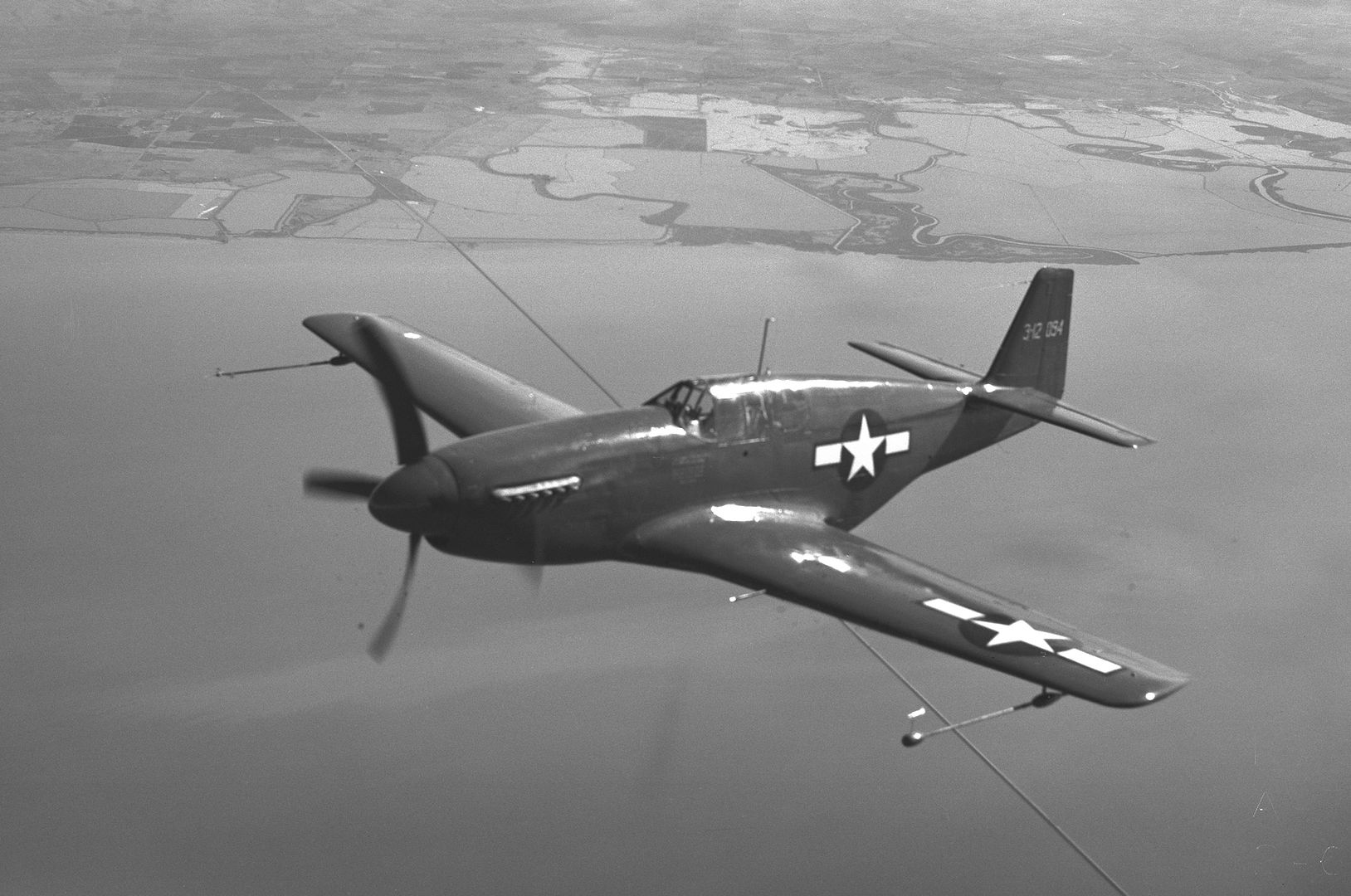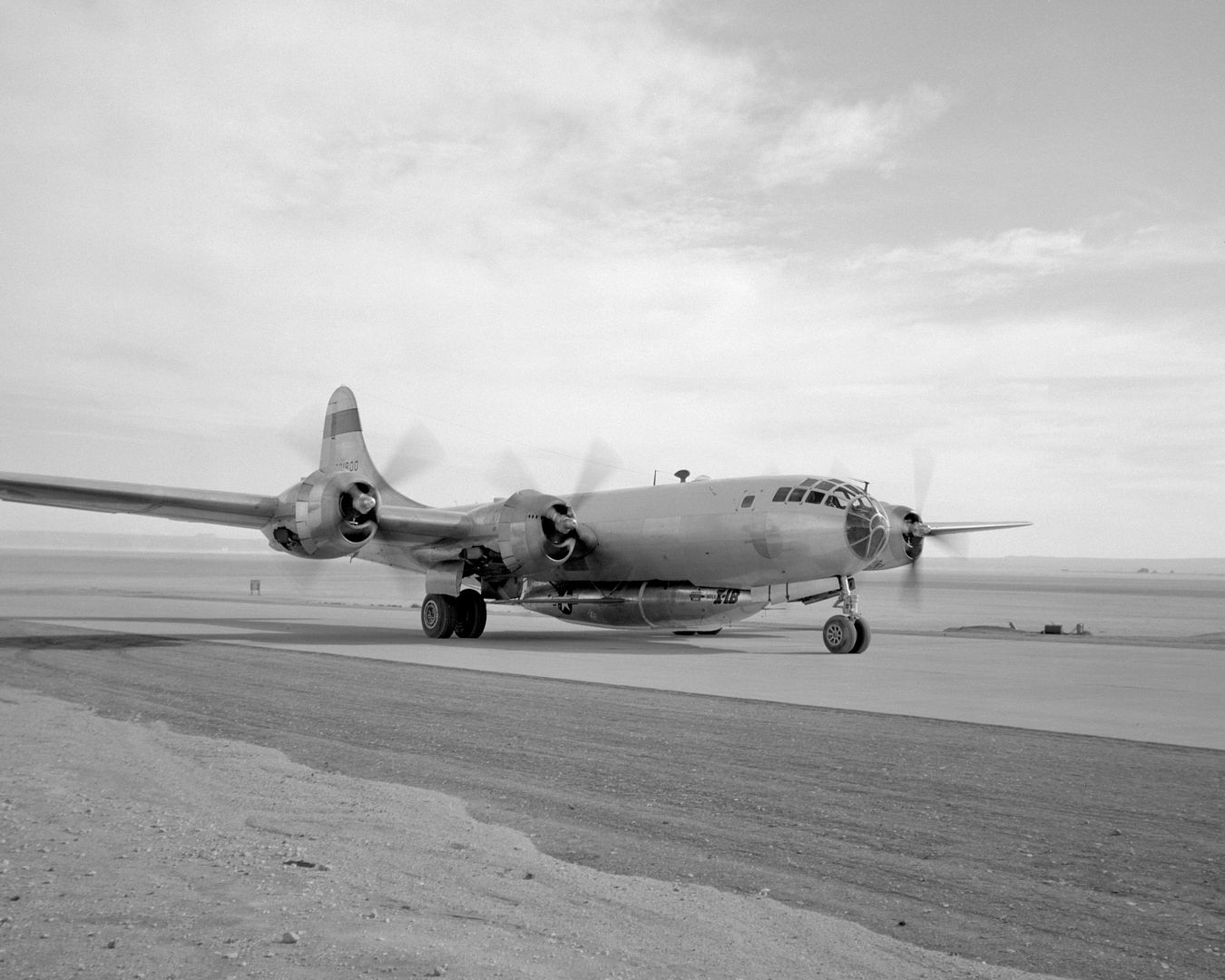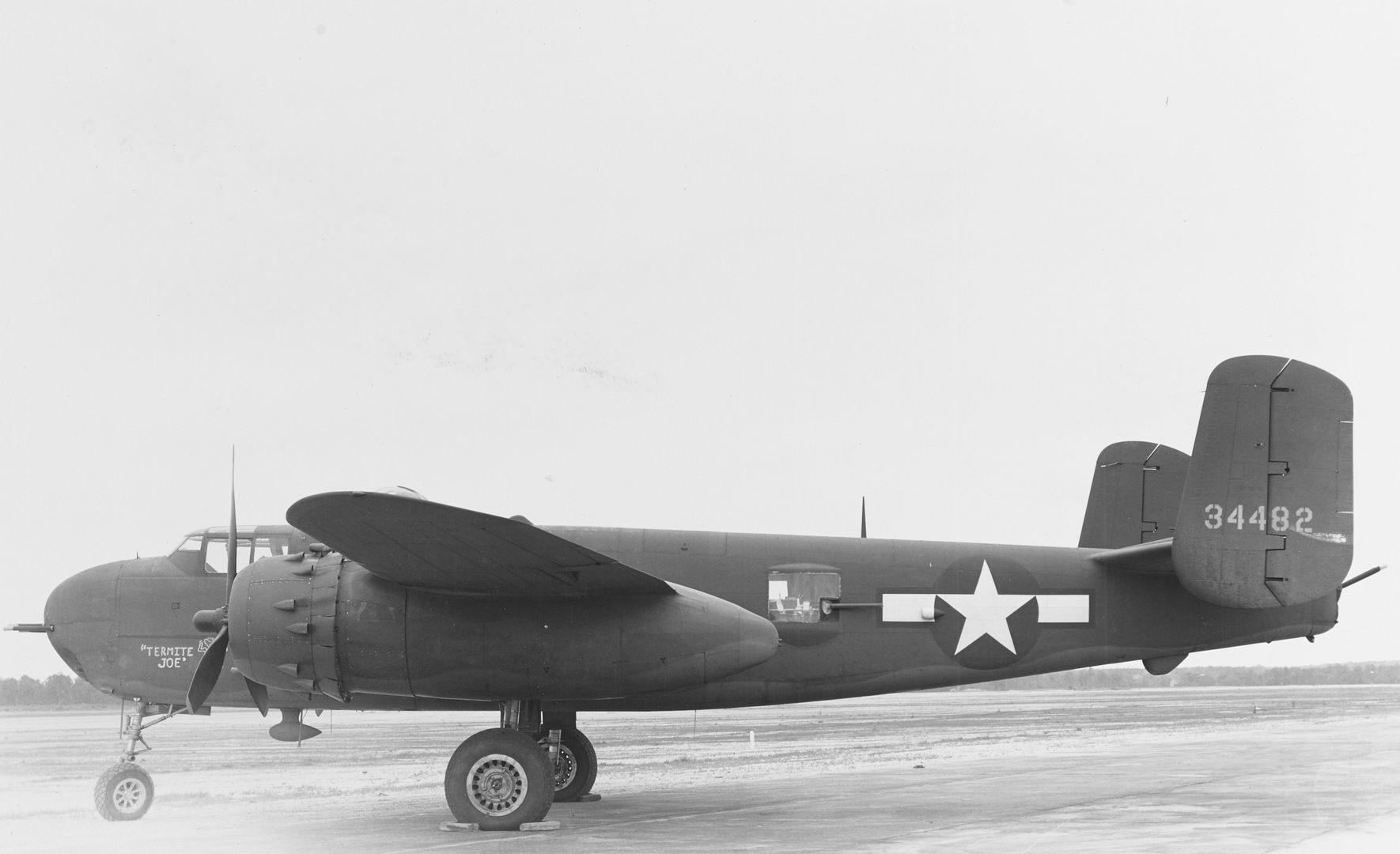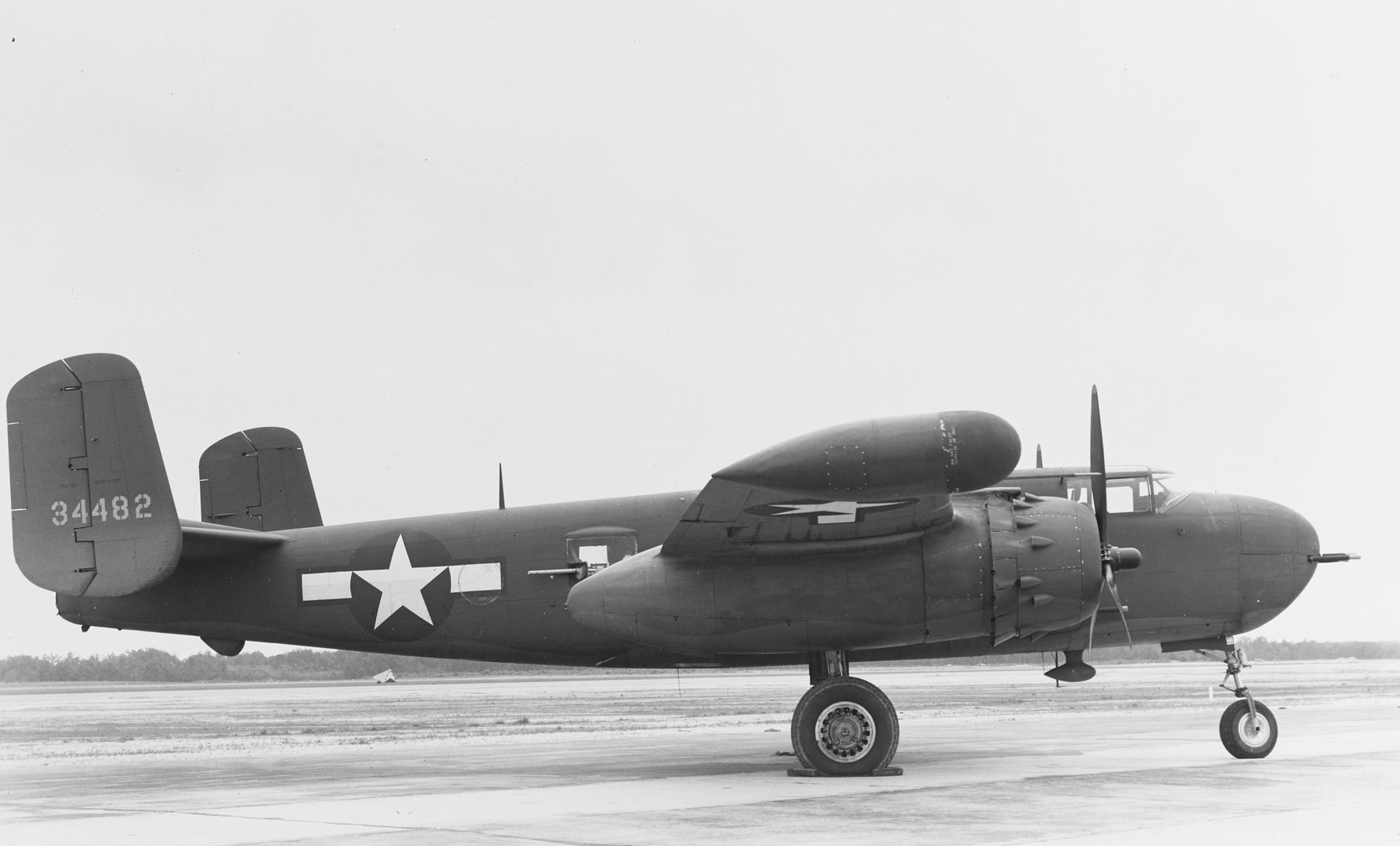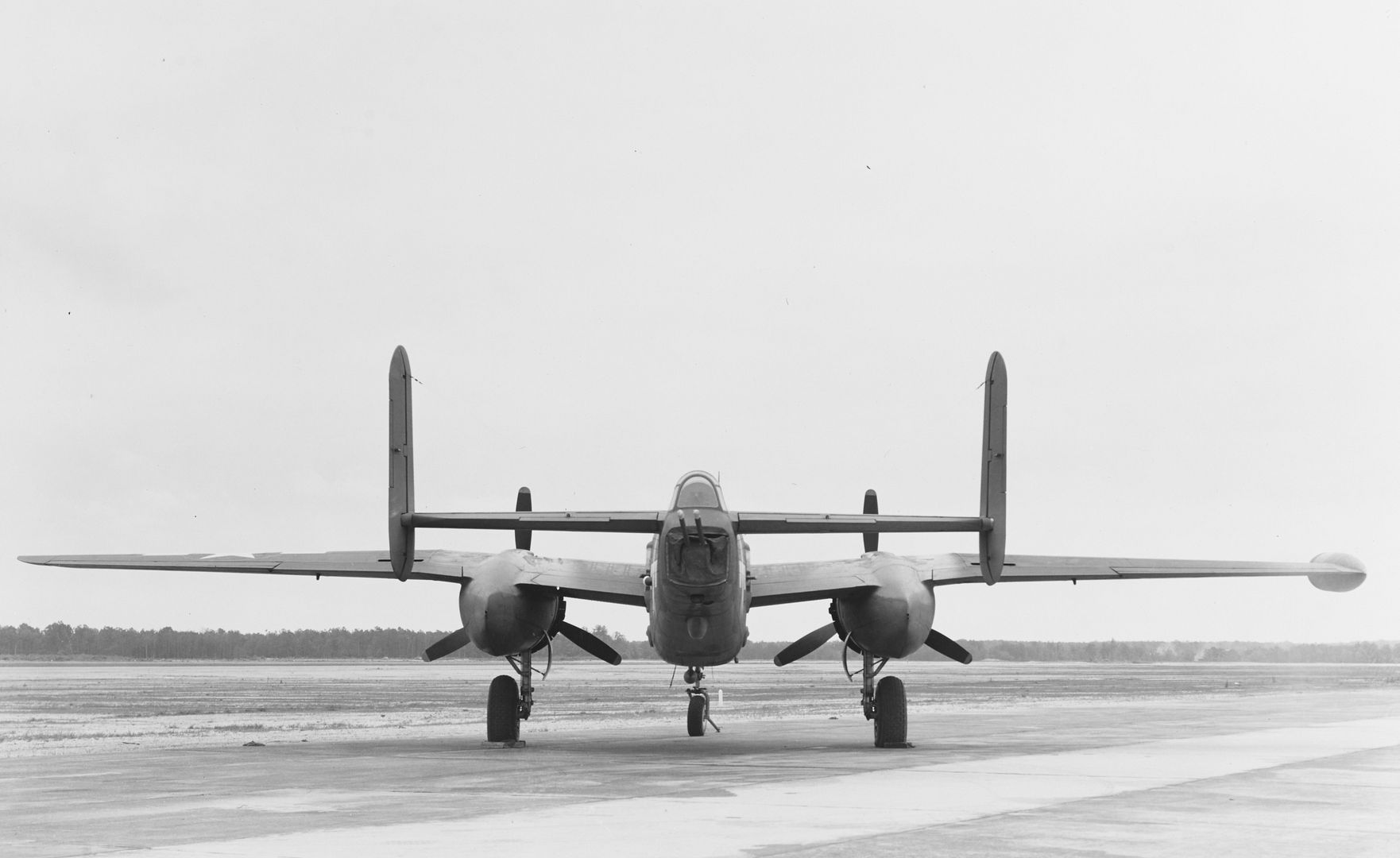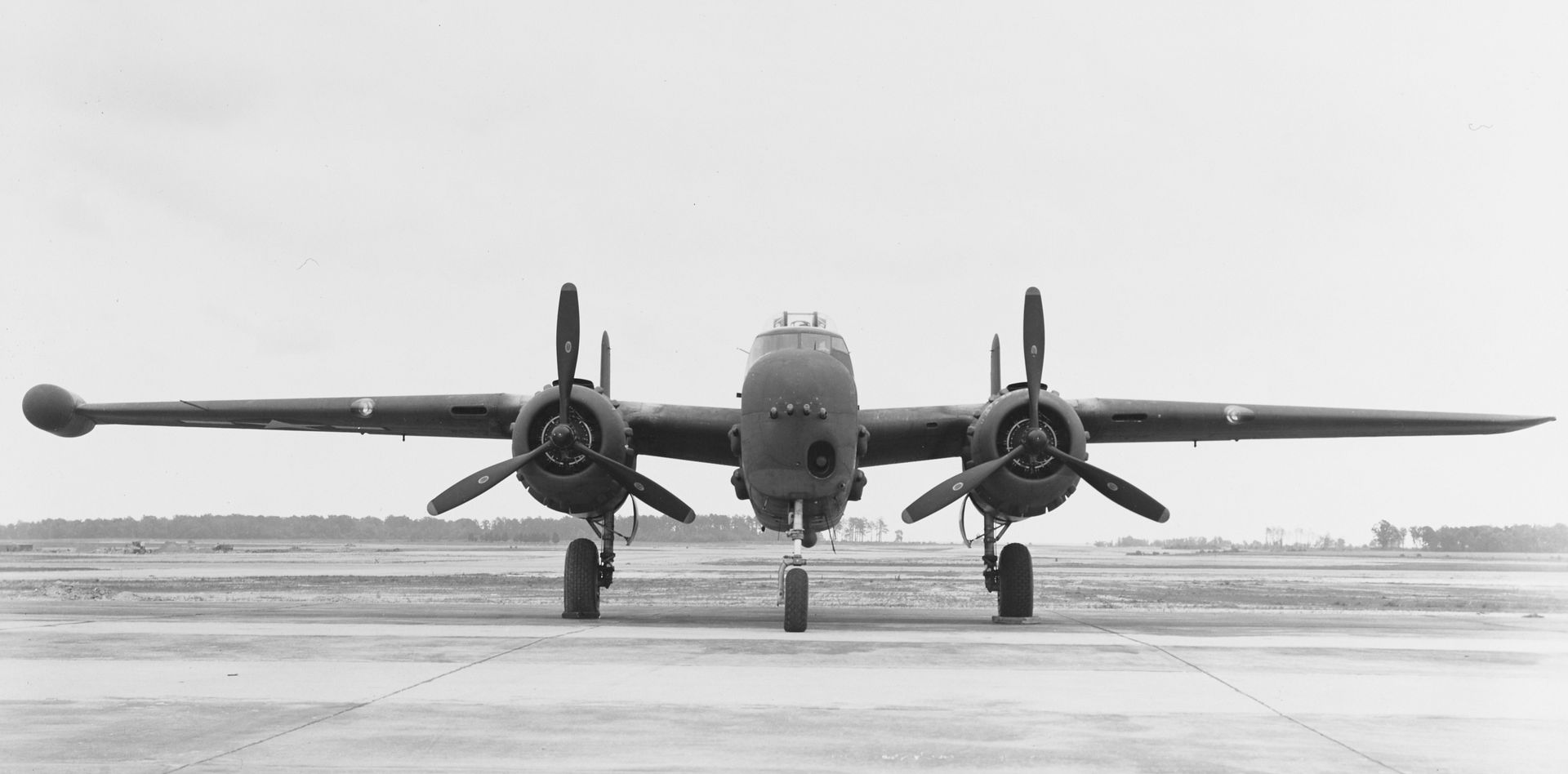Forums
- Forums
- Axis And Allies Forum
- General Discussion
- Photo of the week
Photo of the week
Post a reply
- Go to Previous topic
- Go to Next topic
- Go to Welcome
- Go to Introduce Yourself
- Go to General Discussion
- Go to Screenshots, Images and Videos
- Go to Off topic
- Go to Works in Progress
- Go to Skinning Tips / Tutorials
- Go to Skin Requests
- Go to IJAAF Library
- Go to Luftwaffe Library
- Go to RAF Library
- Go to USAAF / USN Library
- Go to Misc Library
- Go to The Ops Room
- Go to Made in Germany
- Go to Campaigns and Missions
- Go to Works in Progress
- Go to Juri's Air-Raid Shelter
- Go to Campaigns and Missions
- Go to Works in Progress
- Go to Skinpacks
- Go to External Projects Discussion
- Go to Books & Resources
-
 Main AdminThis weekends photo.
Main AdminThis weekends photo.
And a fantastic Vought factory shot.
The F4U-7, built for the French Navy, completed the venerable Corsair line. Essentially the same as an F4U-4 in an F4U-6 (AU-1) airframe, it was equipped with a Pratt and Whitney two-speed, two-stage engine (R-2800-18W), making it a high-altitude fighter.
In 1952, the F4U-7 was used by the French in Indochina - the Corsair?s third war.
For 13 years (1940 through 1952), F4U Corsairs were produced for the U.S. Navy. The last of the Corsairs (the F4U-7) was delivered to the French Navy early in 1952, making it the last piston-engined fighter to be built in the United States. When the last Corsair rolled off the production line it had the number 12,571. Never before had a fighter enjoyed such a long production life. Nor was the Corsair?s glory all of battle origin. Commander Cook Cleland, USNR, flying the Vought-designed airplane as a civilian, captured the Thompson Trophy event in 1947 and again in 1949 with average speeds of 396 and 397 miles an hour over closed courses
The Corsair thus completed the cycle: from fighter to dive-bomber, to fighter-bomber, to attack plane, and back to fighter.
-
 Main Admin
Main Admin -
 Main Admin
Main Admin -
 Main AdminWeekends photo's.
Main AdminWeekends photo's.
And staying with NACA & B-29's
A Boeing B?29 Superfortress at the National Advisory Committee for Aeronautics (NACA) Aircraft Engine Research Laboratory in Cleveland, Ohio. The B?29 was the Army Air Forces? deadliest weapon during the latter portion of World War II. The aircraft was significantly larger than previous bombers but could fly faster and higher. The B?29 was intended to soar above anti-aircraft fire and make pinpoint drops onto strategic targets. The bomber was forced to carry 20,000 pounds more armament than it was designed for. The extra weight pushed the B?29?s four powerful Wright R?3350 engines to their operating limits. The over-heating of the engines proved to be a dangerous problem. The military asked the NACA to tackle the issue. Full-scale engine tests on a R?3350 engine in the Prop House demonstrated that a NACA-designed impeller increased the flow rate of the fuel injection system. Altitude Wind Tunnel studies of the engine led to the reshaping of cowling inlet and outlet to improve airflow and reduce drag. Single-cylinder studies on valve failures were resolved by a slight extension of the cylinder head, and the Engine Research Building researchers combated uneven heating with a new fuel injection system. The modifications were then tried out on an actual B?29. The bomber arrived in Cleveland on June 22, 1944. The new injection impeller, ducted head baffles and instrumentation were installed on the bomber?s two left wing engines. Eleven test flights were flown over the next month with military pilots at the helm. Overall the flight tests corroborated the wind tunnel and test stand studies.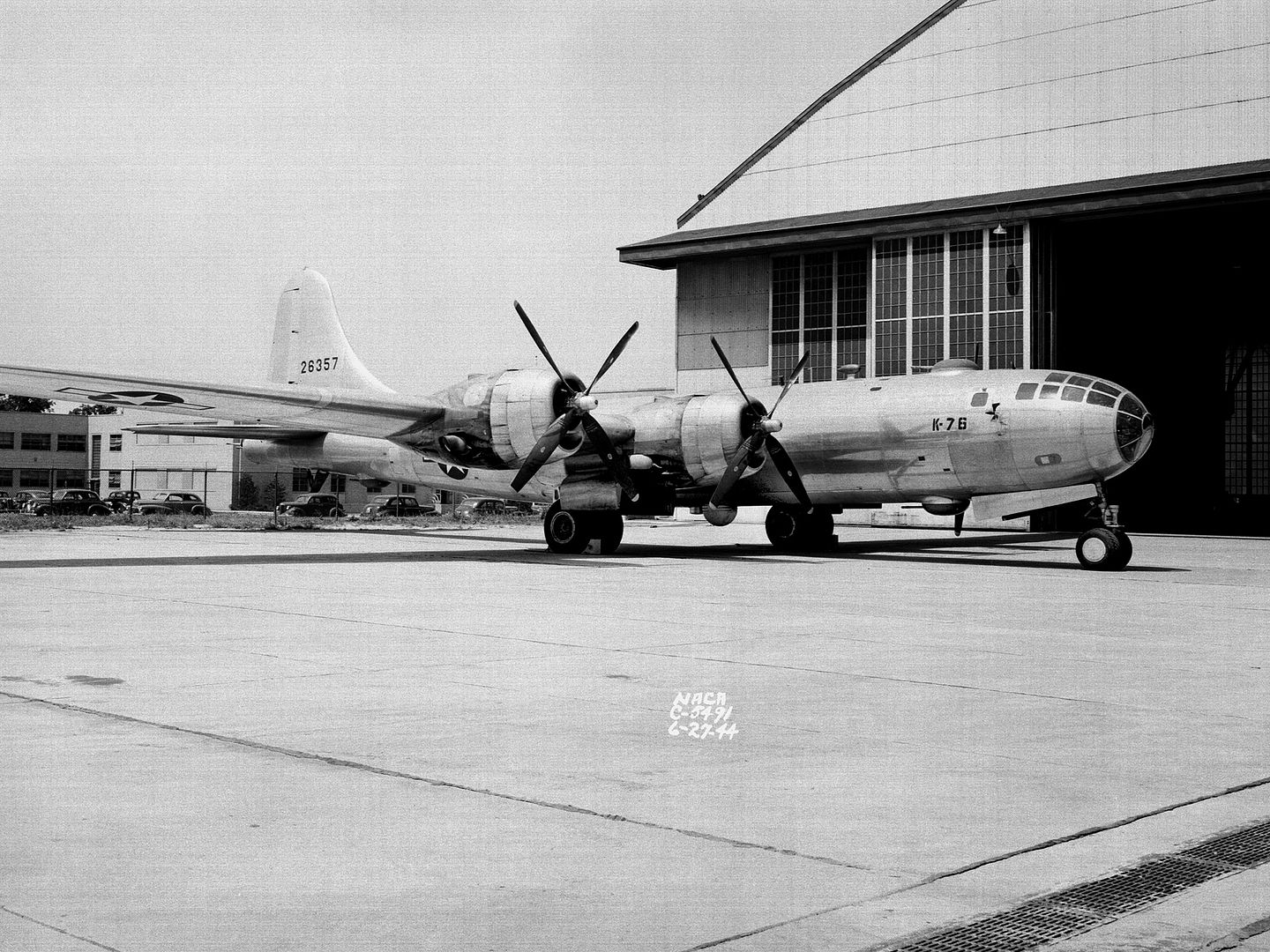
The U.S. Navy acquired four B-29-BWs from the U.S. Army Air Forces on March 14, 1947. These aircraft were modified for long-range patrol missions and given the designation P2B-1S with Navy Bureau Numbers (BuNo) 84028, 84029, 84030 and 84031.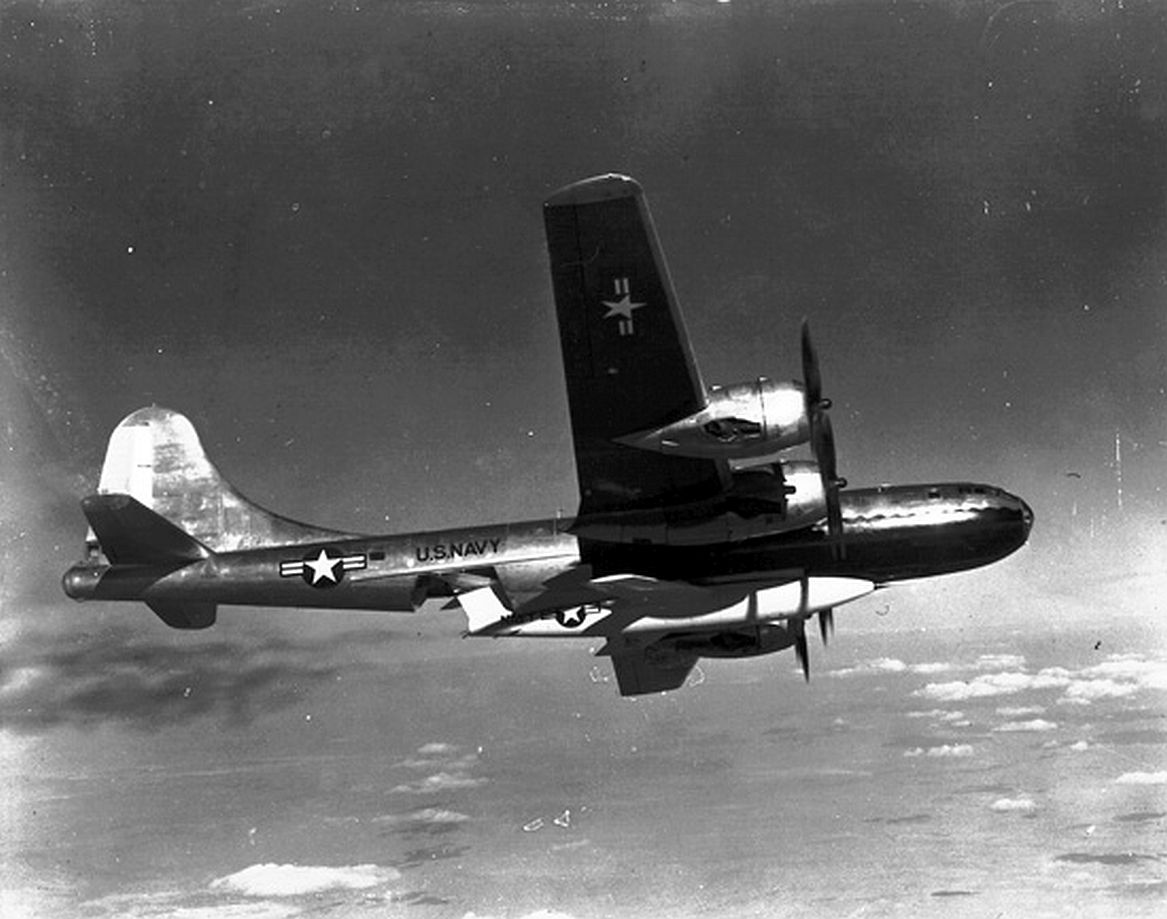
BuNo 84029, previously AAF Ser. No. 45-21787, later went through modifications to carry the Navy's Douglas D-558-2 Skyrocket high-speed rocket-powered research aircraft. The bomb bay was modified to carry the Skyrocket II under the belly and dropped for supersonic speed testing. The first Skyrocket test flight occurred on September 8, 1950 with test pilot William B. Bridgeman, and George Jansen flying the B-29. Scott Crossfield later broke Mach 2 with the Skyrocket on November 20, 1953; the last Skyrocket flight was in December 1956.
The P2B-1S "mother-ship" was nicknamed Fertile Myrtle and was assigned the NACA number 137. As of May 2013, this aircraft was in the collection of Kermit Weeks at his Fantasy of Flight aviation museum in Polk City, Florida. The forward fuselage section was restored and briefly displayed at the Florida Air Museum in Lakeland, Florida. It has since been relocated to Fantasy of Flight's "Golden Hill" storage facility along with the remainder of the disassembled aircraft and is awaiting full restoration to airworthy flying status at a future date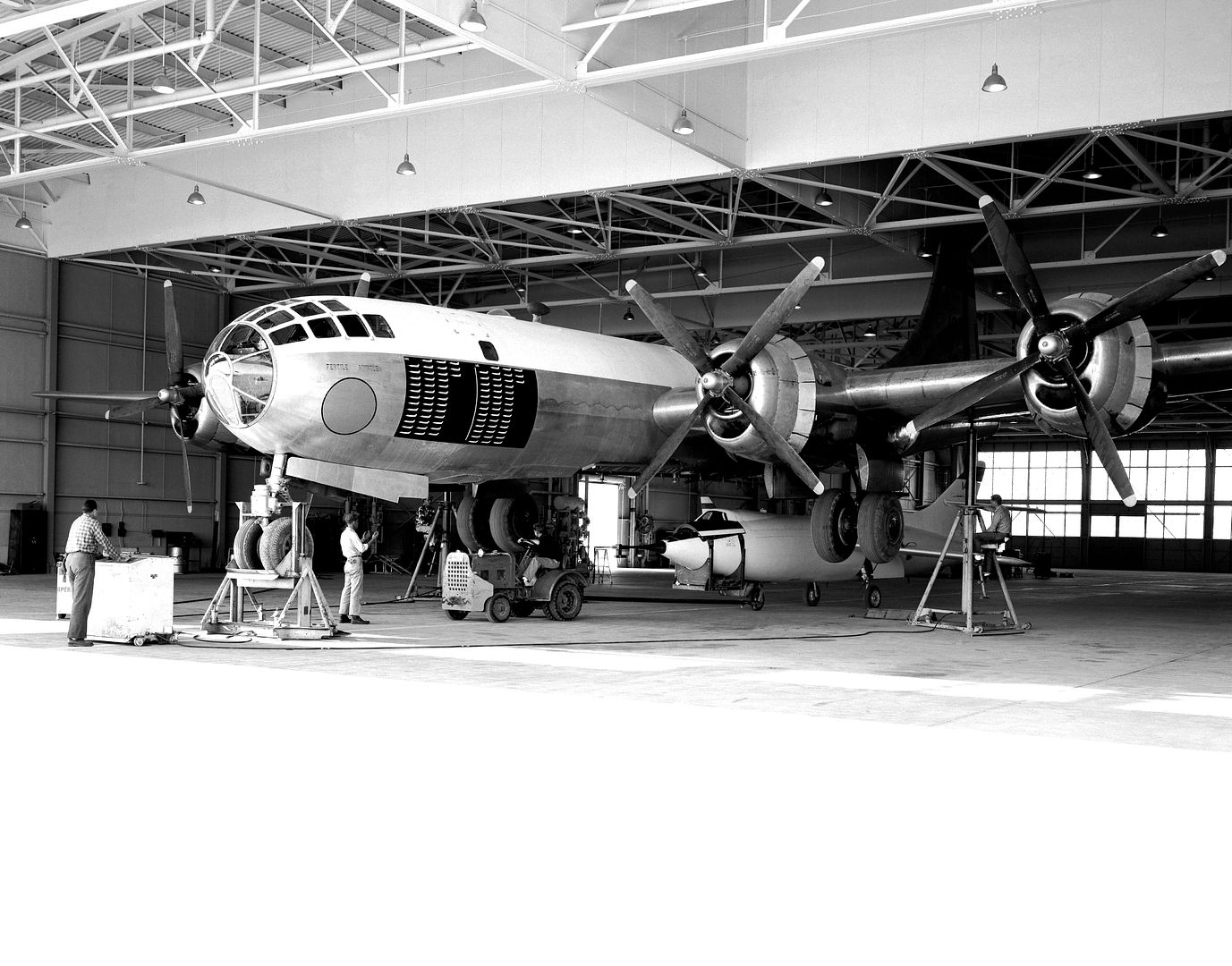
-
 Main AdminWeekend extra & a bit of colour.
Main AdminWeekend extra & a bit of colour.
B-29 -Nicknamed -FLAGSHIP.
At Tinian circa late 1944. This plane was sponsored by the 6th construction brigade, whose emblem is painted on its nose. Seabee painter 1/c John E Anderson who had decorated the plane with caricatures of its crew, poses with two of the aircraft crewmen.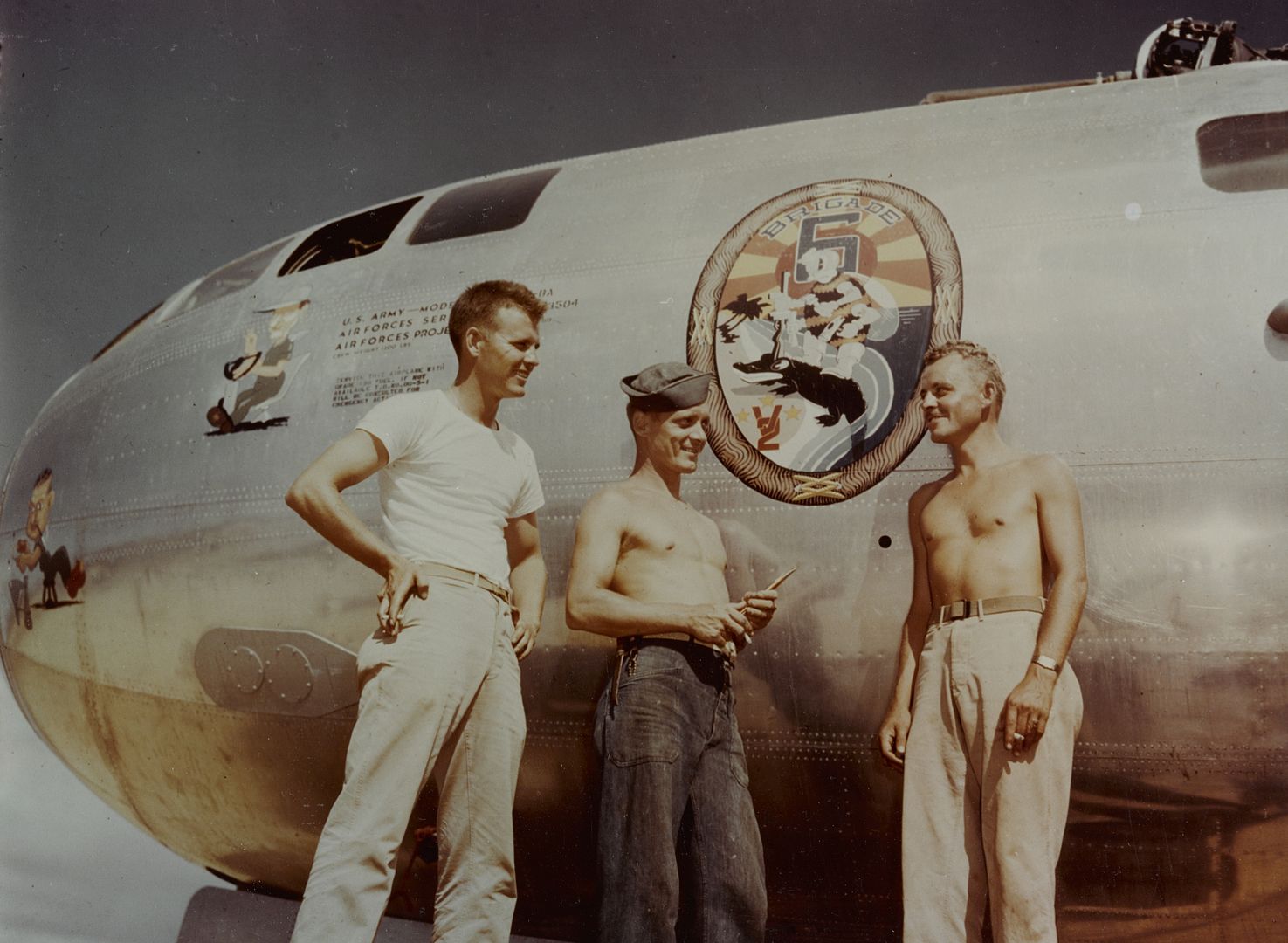
At Tinian circa late 1944, with some of its crewmen and two Navy "Seabee" Artists who had painted on its nose art, and added caricatures of its crew. Present are (L-R) PTRL/C William P. Kantz, MS3/C George E. Lawrence TSGT WM. E. Sunningham and SGT WM. L. Patton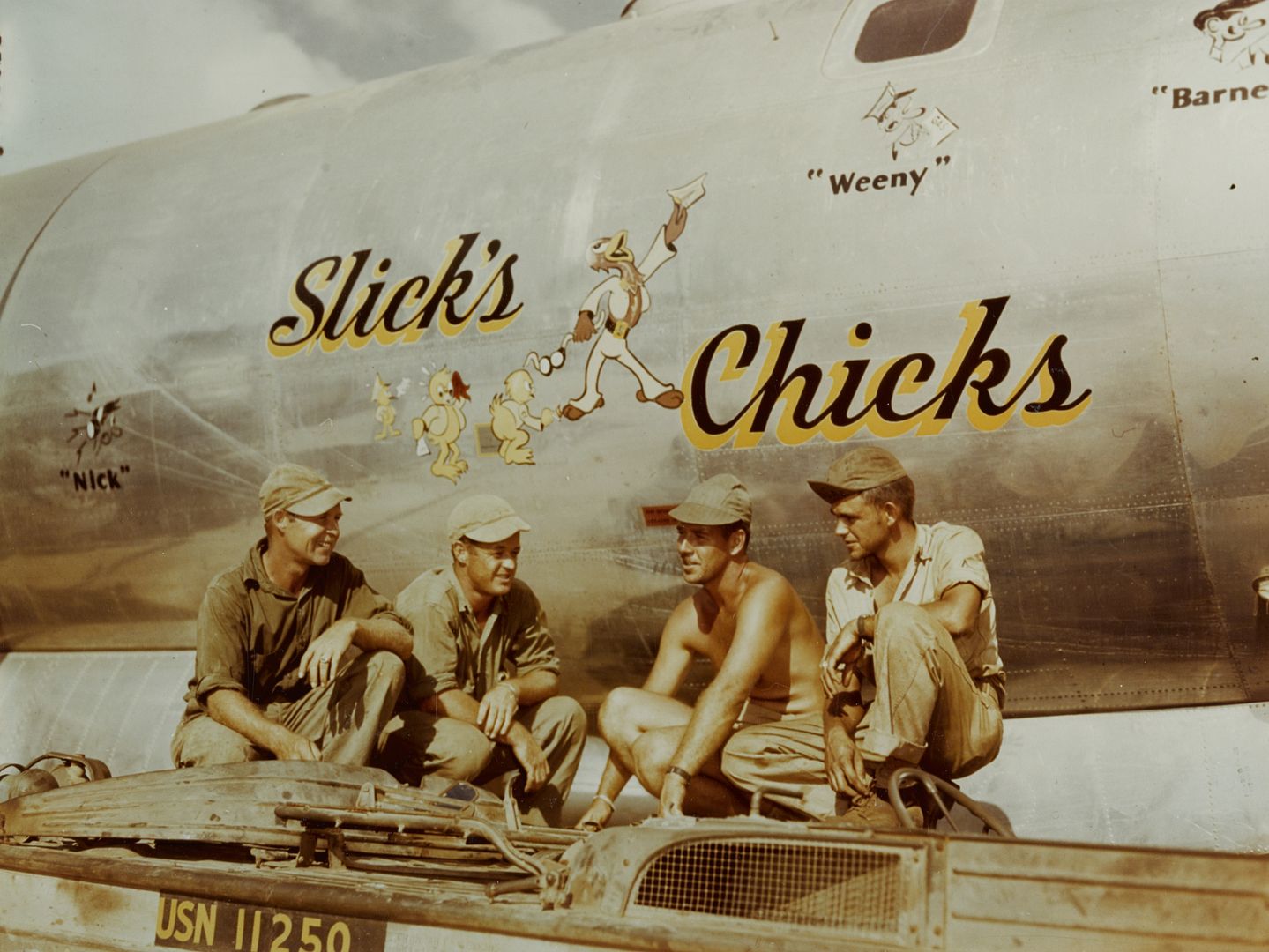
Navy Seabee Artists Lawrence (rt) and Kantz (2nd from rt) pose with their nose art handiwork, at Tinian, circa 1944-45. Also present are USAAF SGTs William L. Patton and William E. Cunningham (crew chief)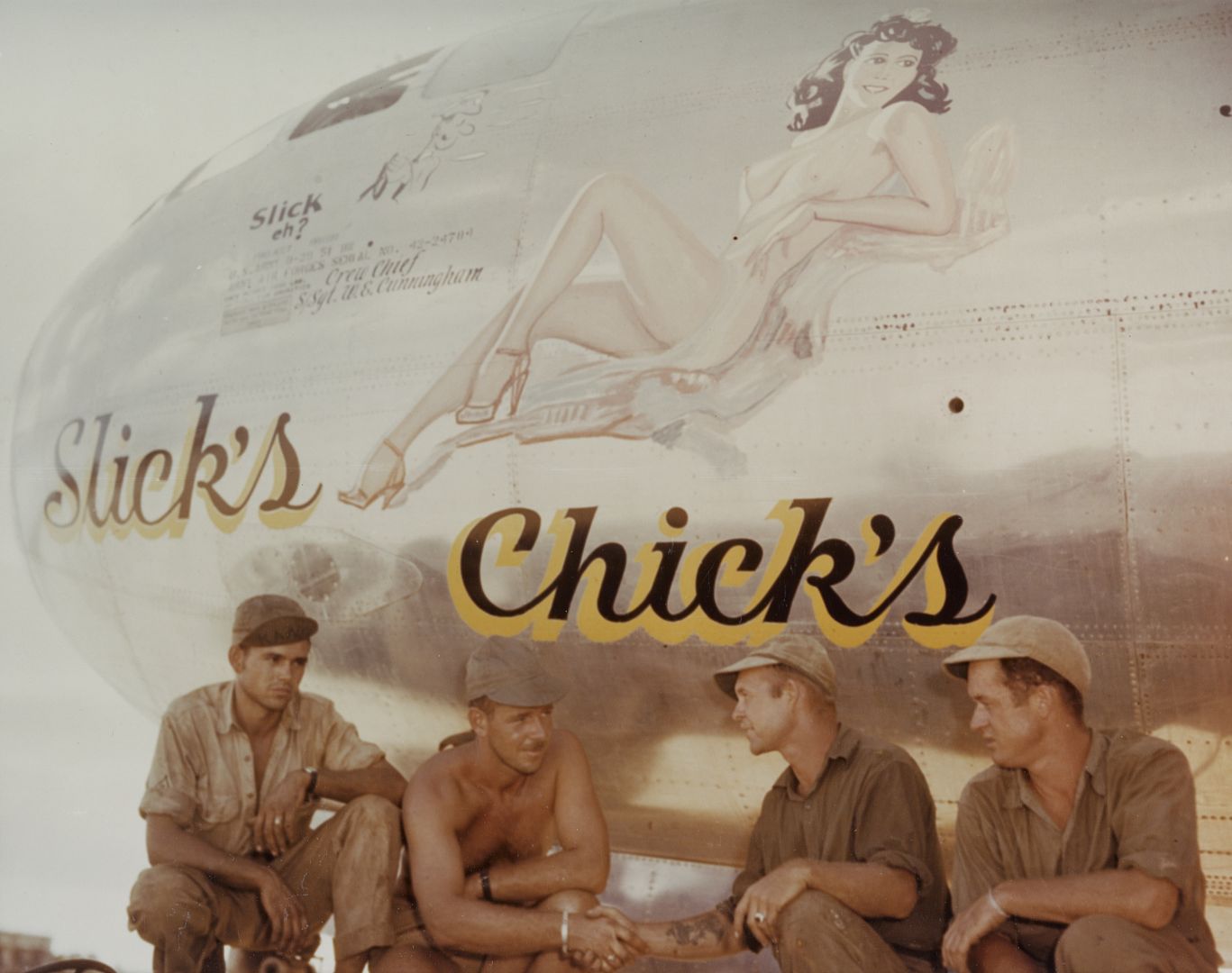
B-29 - 42-24797 Painter I/C Edmund D. Wright, USNR, completed cartoon decoration of the plane, with nickname "Jackpot" and turns it over to Army air corps corporals Eugene H. Rees (cntr) and Marion V. Lewis (rt), at Tinian, 1944-45. Wright was a member of the Navy 107th Seabee battalion which sponsored the plane and adopted its crew.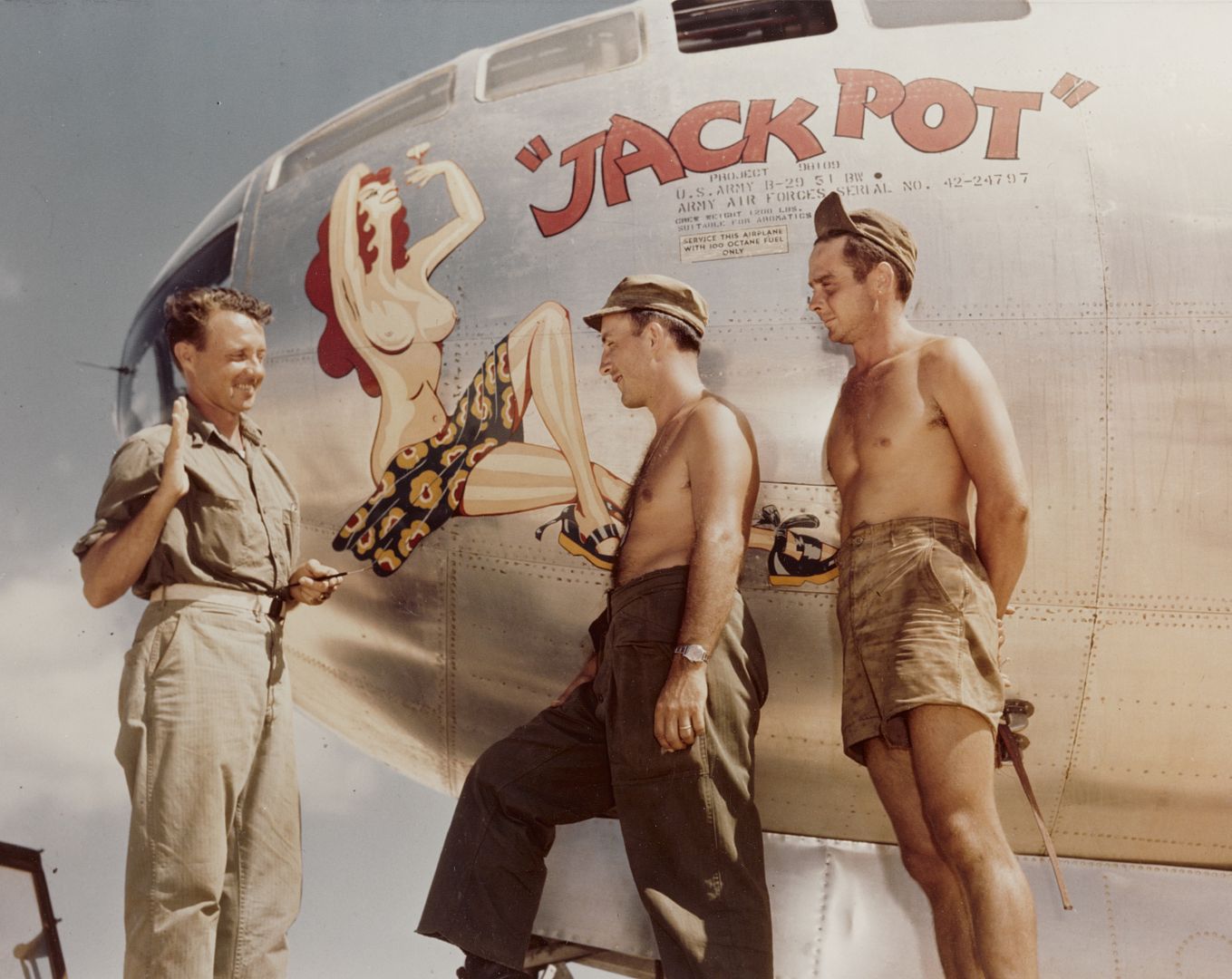
-
 Main AdminWednesdays photo.
Main AdminWednesdays photo.
A Lockheed P-80 Shooting Star jet aircraft on the tarmac at the National Advisory Committee for Aeronautics (NACA) NACA Lewis Flight Propulsion Laboratory in Cleveland, Ohio. The Air Force aircraft was participating in the 1946 National Air Races over Labor Day weekend. The air races were held at the Cleveland Municipal Airport seven times between 1929 and 1939. The events included long distance, sprint, and circuit competitions, as well as aeronautical displays, demonstrations, and celebrities. The air races were suspended indefinitely in 1940 for a variety of reasons, including the start of World War II in Europe. The nature of the National Air Races changed dramatically when the event resumed in 1946. The introduction of jet aircraft, primarily the Lockheed P-80 seen here, required an entire separate division for each event. Since military pilots were the only ones with any jet aircraft experience, only they could participate in those divisions. In addition, the performance and quantity of commercially manufactured piston aircraft had increased dramatically during the war. By 1946, the custom-built racing aircraft that made the pre-war races so interesting were no longer present.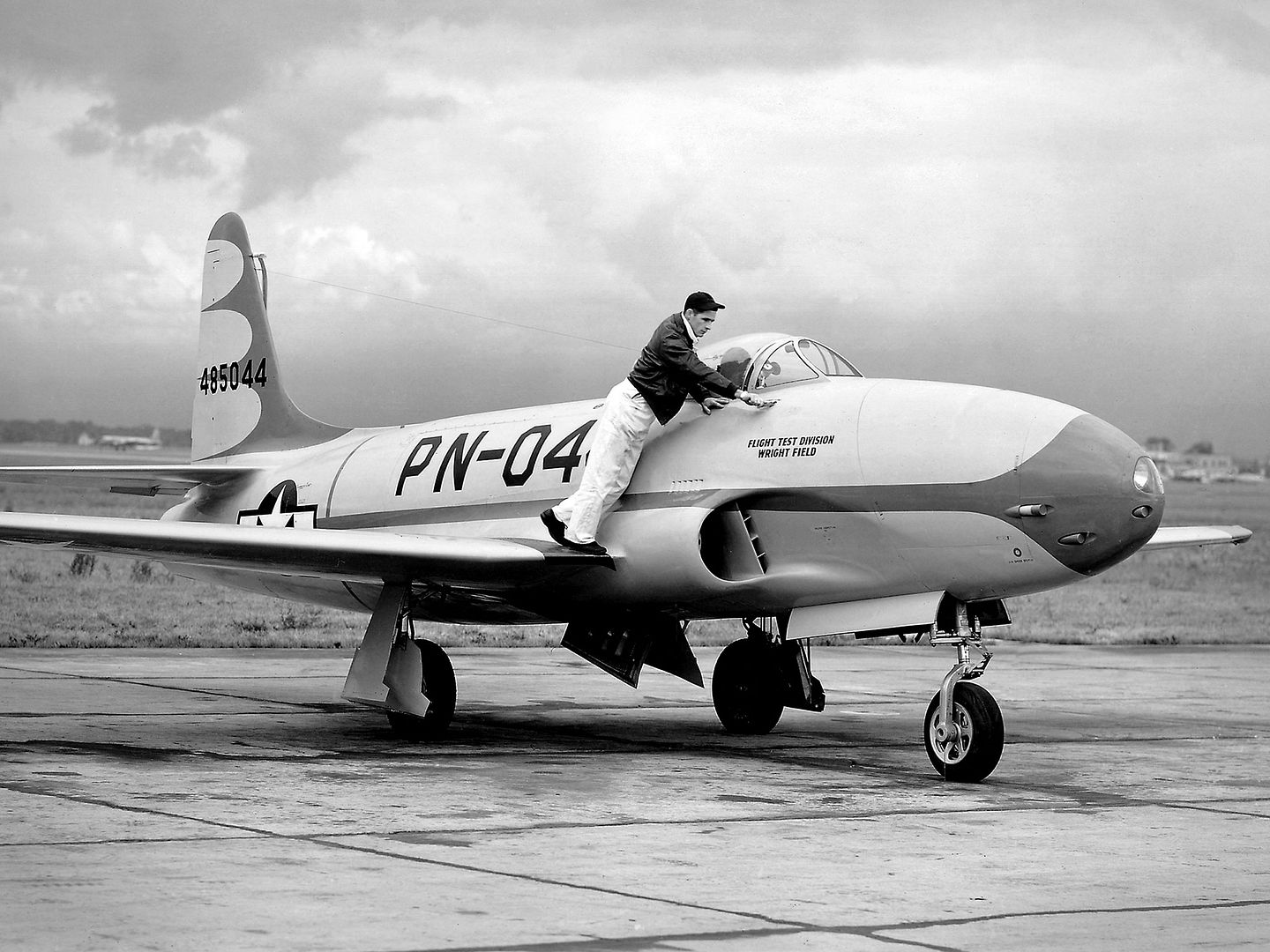
-
 Main AdminIn 1945, the US Navy acquired one USAAF A-26B and one A-26C for testing. They were assigned the designation XJD-1 and were given the Bureau of Aeronautics numbers of 57990 (ex A-26B-45-DL 44-34217) and 57991 (ex A-26C-40-DT 44-35467).
Main AdminIn 1945, the US Navy acquired one USAAF A-26B and one A-26C for testing. They were assigned the designation XJD-1 and were given the Bureau of Aeronautics numbers of 57990 (ex A-26B-45-DL 44-34217) and 57991 (ex A-26C-40-DT 44-35467).
Subsequently, in the immediate postwar years the Navy acquired 150 surplus A-26s for use by land-based utility squadrons as target tugs. Some of the early deliveries were from a batch of Invaders that had been ordered by the Royal Air Force but never delivered, but most of the planes were ex-USAAF Invaders from postwar stocks that were now deemed to be surplus to requirements.
The JD-1s were operated well into the 1960s by seven US Navy utility squadrons (VU-1, VU-2, VU-3, VU-4, VU-5, VU-7, and VU-10) as target tugs, drone directors, and general utility aircraft. Those that were modified as drone directors were redesignated JD-1D.
In 1962, the surviving JD-1s were redesignated UB-26J in accordance with the new Tri-Service designation system. The JD-1D drone directors became DB-26J.
Douglas XJD-1 Invader (Bu # 57991), of Utility Squadron Four (VJ-4) In flight out of Naval Air Station, Norfolk, Virginia, 13 July 1945. The plane wears the yellow color scheme applied to utility, target service and training aircraft.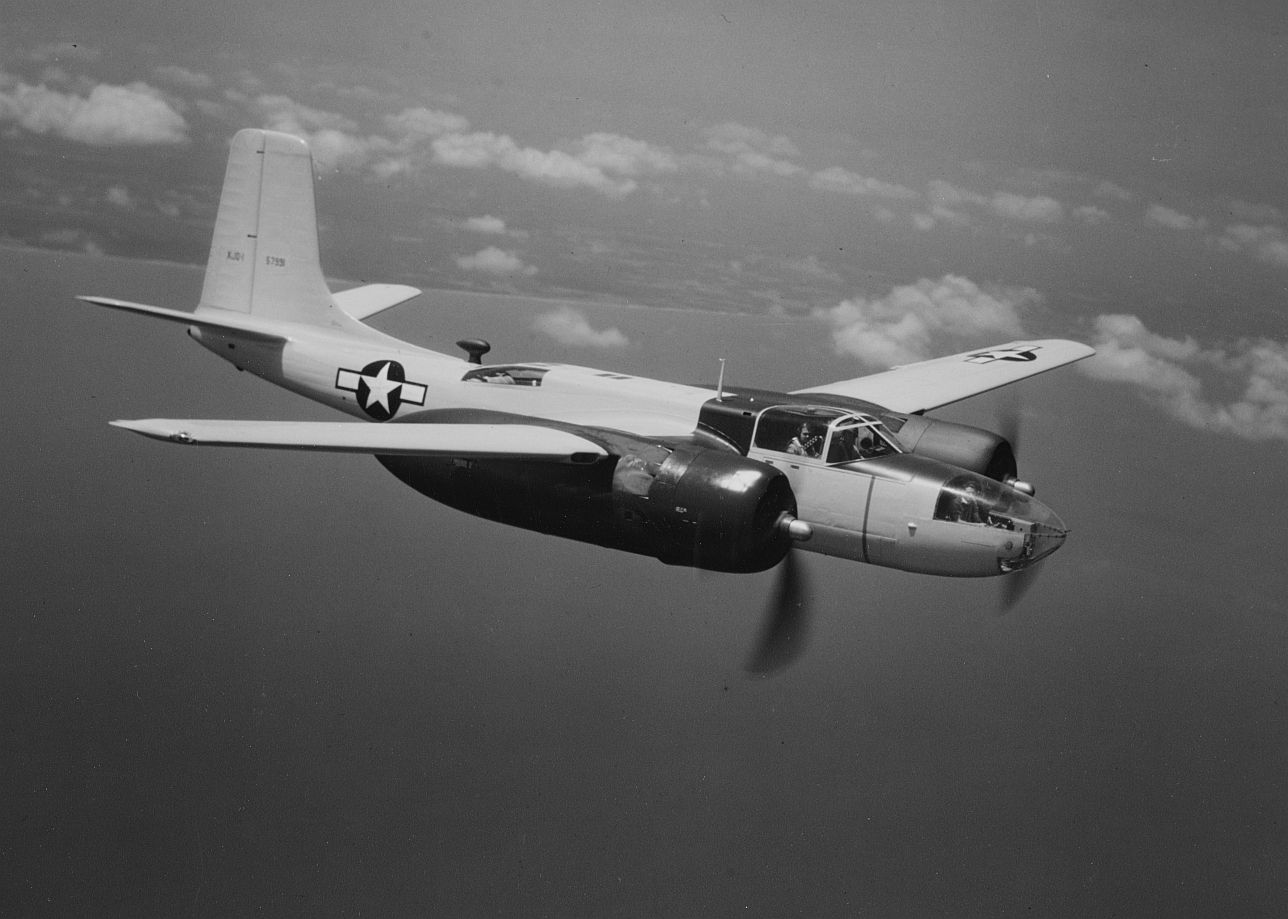
-
 Main Admin
Main Admin -
 Main AdminVMB-612 was commissioned on 1 October 1943 at Cherry Point, North Carolina. The squadron was directed in January 1944 to experiment in low-altitude night-radar operations. From January until August 1944 the squadron alternated between Boca Chica, Florida and New River, North Carolina where tactical training was provided. The squadron departed in August 1944 for Saipan via Ewa, Majuro, and Eniwetok, arriving in late October 1944. From November 1944 to February 1945 the squadron flew strikes against shipping in the Bonin and Volcano Island areas in support of the invasion of Iwo Jima. Following the capture of Iwo Jima, the squadron transferred there during April 1945. Operating from South Field, VMB-612 aircraft continued anti-shipping missions against the Bonin Islands, with patrols ranging as far north as Kyoto on the Japanese mainland. While on Iwo Jima the squadron received, and conducted tests and training in the use, of the new 11.75-inch Tiny Tim rocket. In July 1945 the squadron transferred to Okinawa, operating from Chimu airfield, where they remained until the war ended. VMB-612 was decommissioned at Miramar, California on 15 March 1946 following the squadron's return to the United States.
Main AdminVMB-612 was commissioned on 1 October 1943 at Cherry Point, North Carolina. The squadron was directed in January 1944 to experiment in low-altitude night-radar operations. From January until August 1944 the squadron alternated between Boca Chica, Florida and New River, North Carolina where tactical training was provided. The squadron departed in August 1944 for Saipan via Ewa, Majuro, and Eniwetok, arriving in late October 1944. From November 1944 to February 1945 the squadron flew strikes against shipping in the Bonin and Volcano Island areas in support of the invasion of Iwo Jima. Following the capture of Iwo Jima, the squadron transferred there during April 1945. Operating from South Field, VMB-612 aircraft continued anti-shipping missions against the Bonin Islands, with patrols ranging as far north as Kyoto on the Japanese mainland. While on Iwo Jima the squadron received, and conducted tests and training in the use, of the new 11.75-inch Tiny Tim rocket. In July 1945 the squadron transferred to Okinawa, operating from Chimu airfield, where they remained until the war ended. VMB-612 was decommissioned at Miramar, California on 15 March 1946 following the squadron's return to the United States.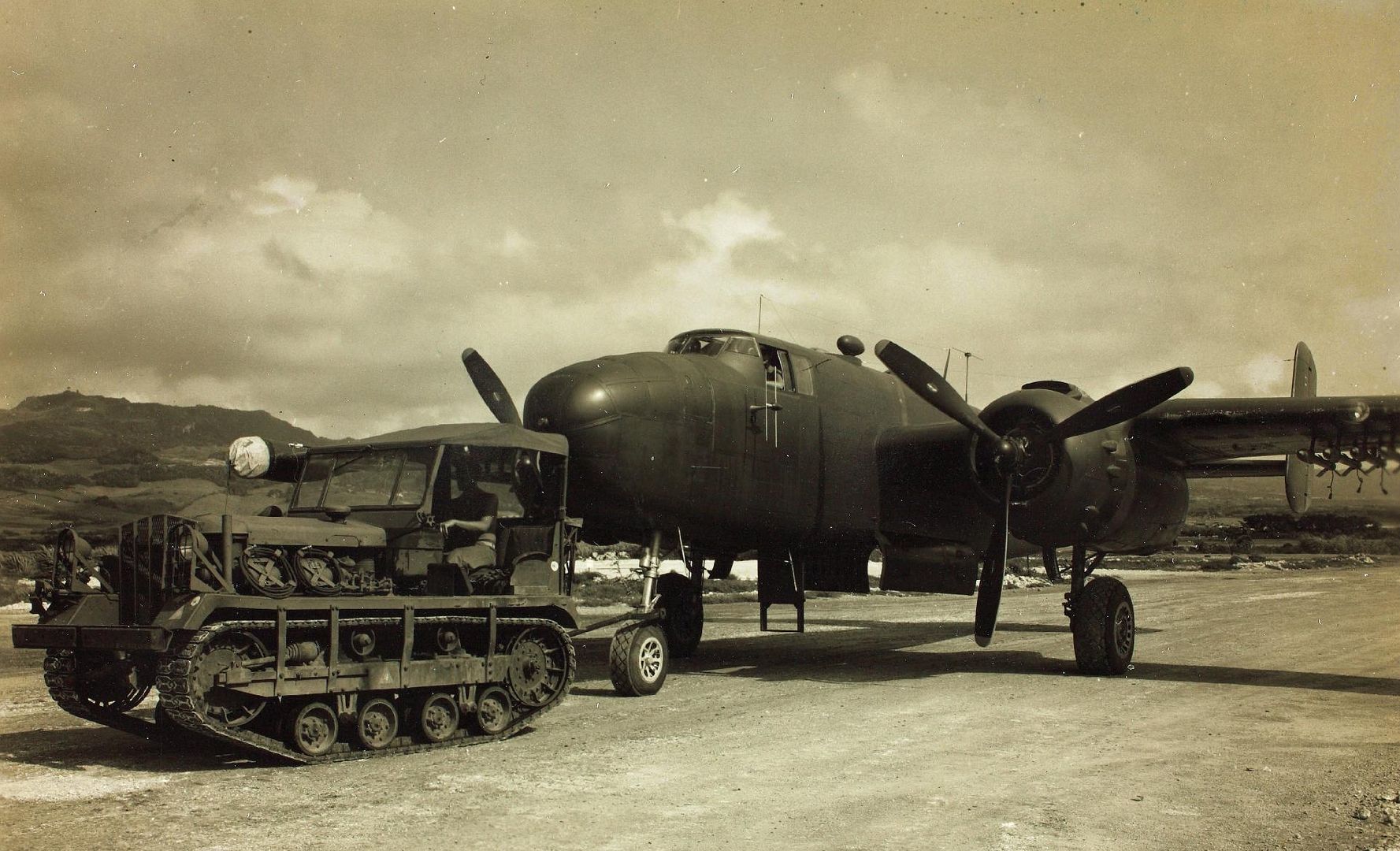
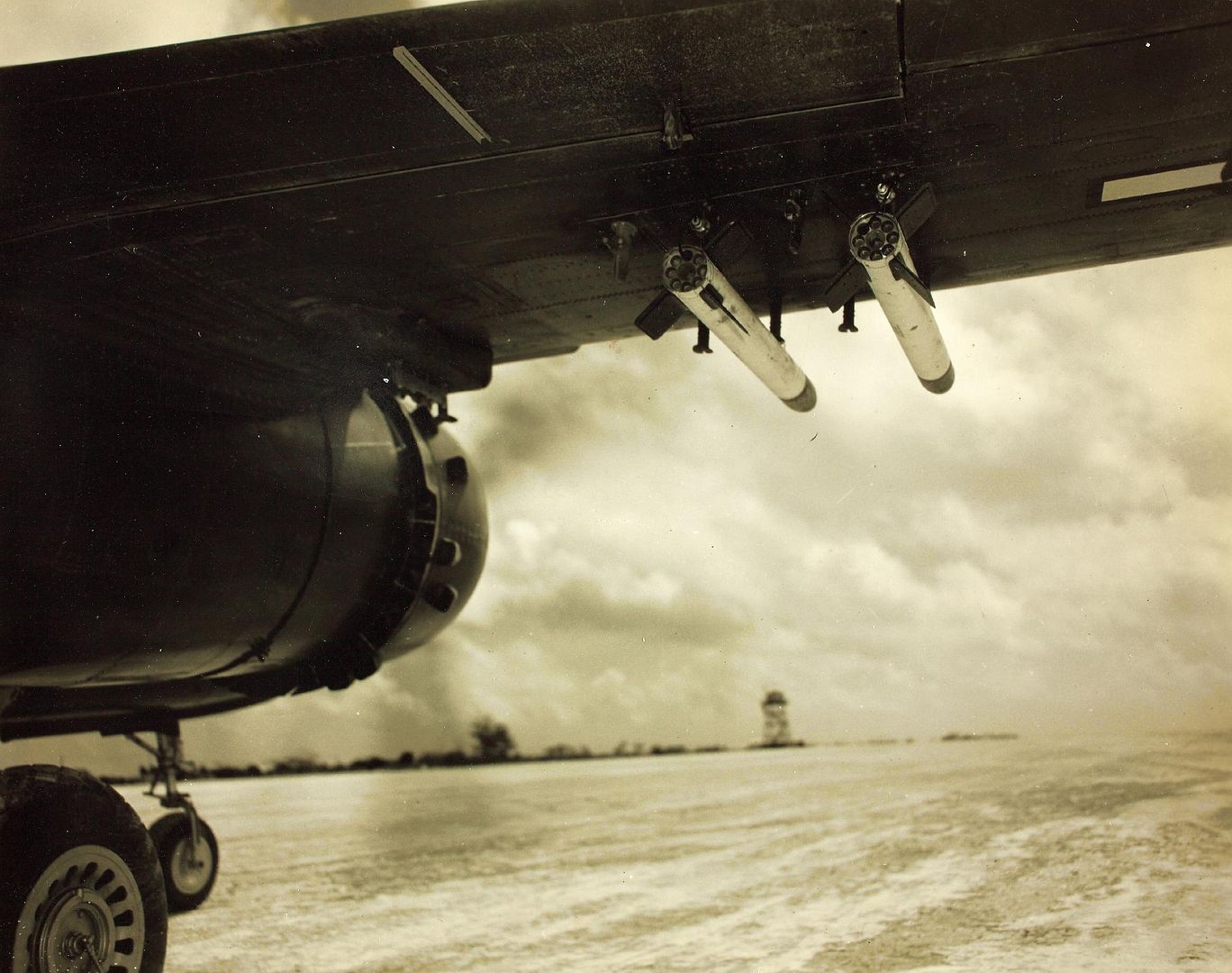

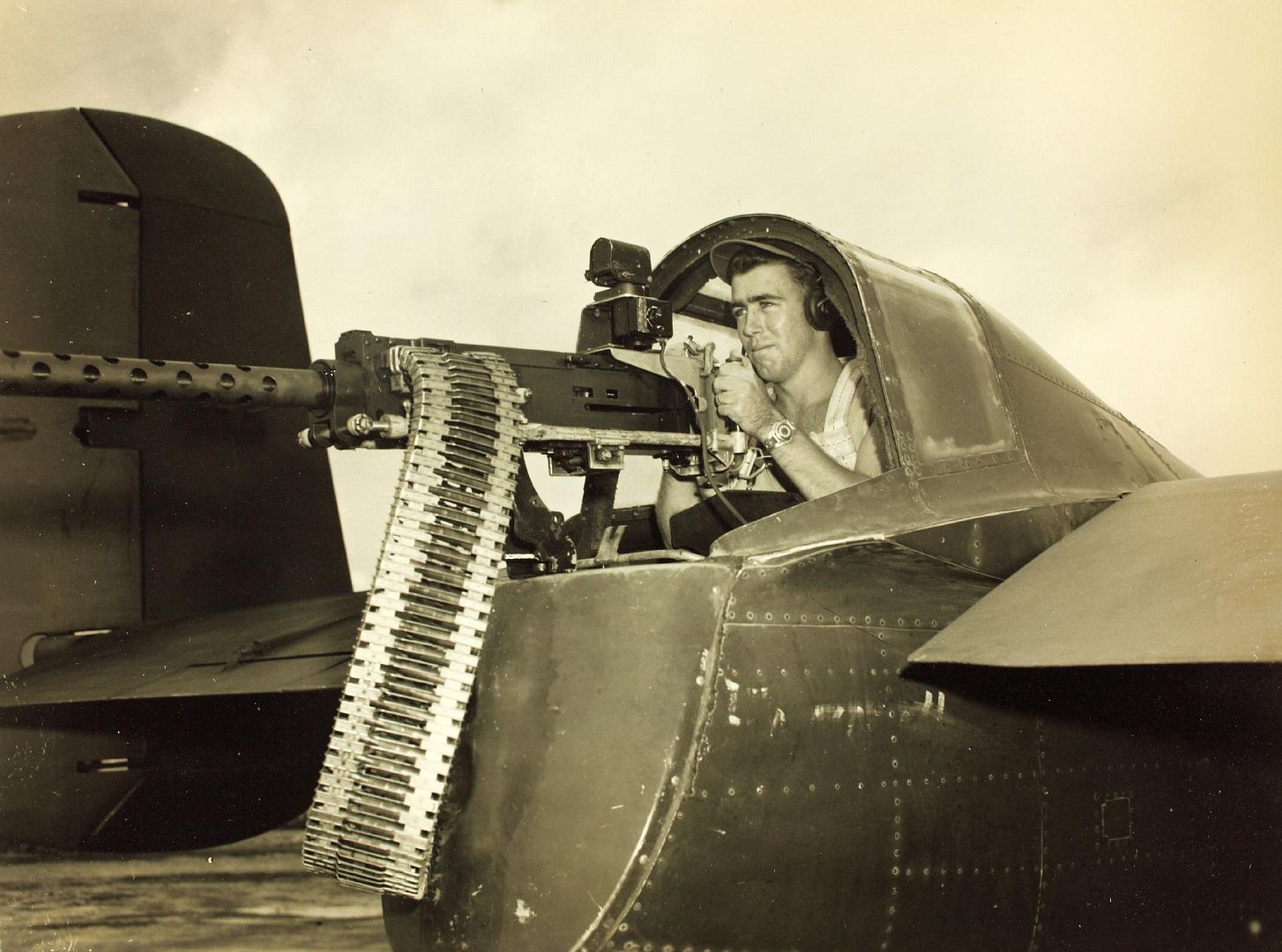

-
 Main AdminThis weeks photo's and some delightful colour shots of SNJ's.
Main AdminThis weeks photo's and some delightful colour shots of SNJ's.
North American SNJ-1 -circa 1941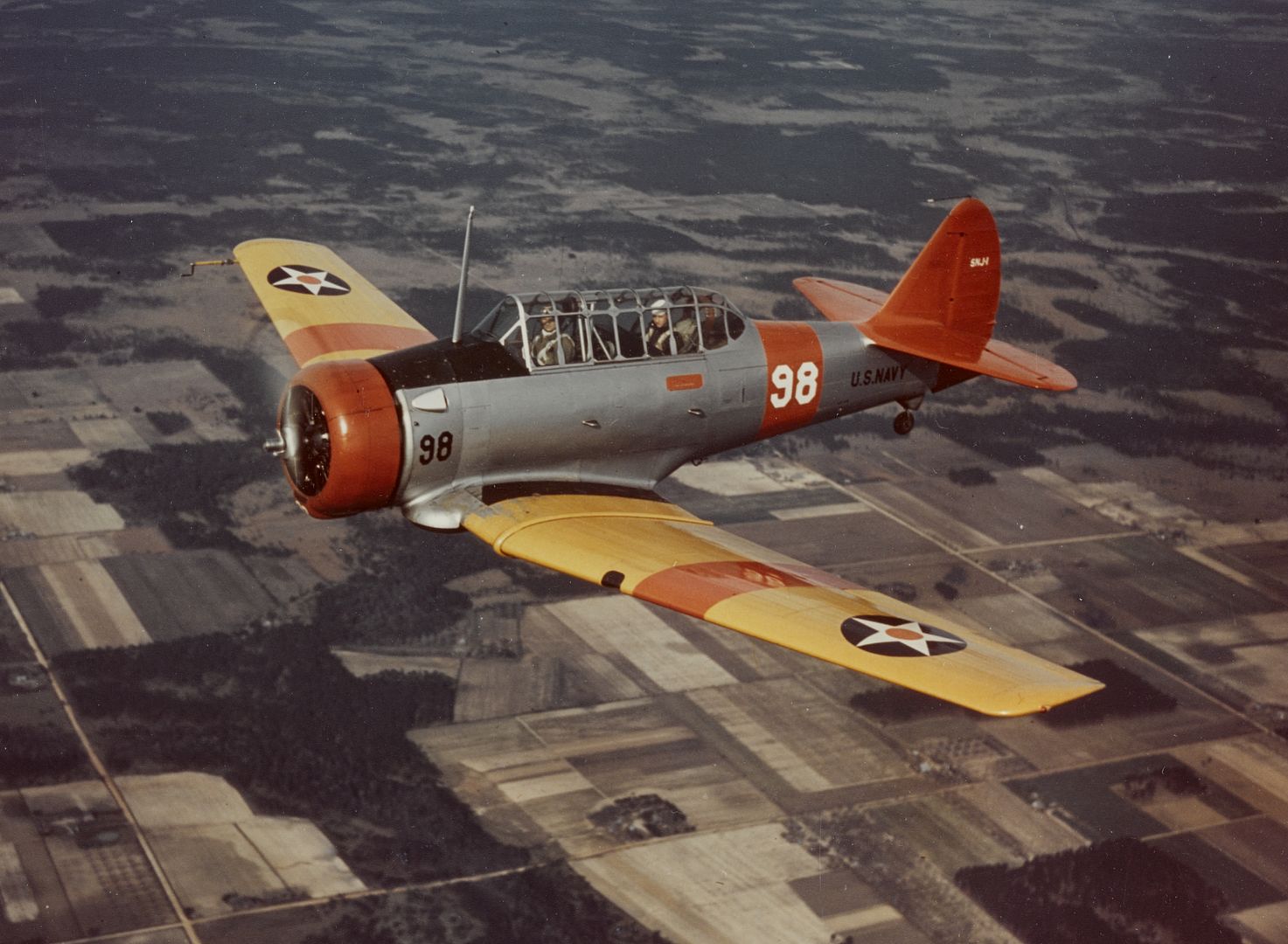
SNJ-3 Of first Marine Aircraft wing flying information with a USMC Curtiss SBC-4 during the spring of 1942. Both planes are in use as trainers. Note tail markings of style used Jan-May.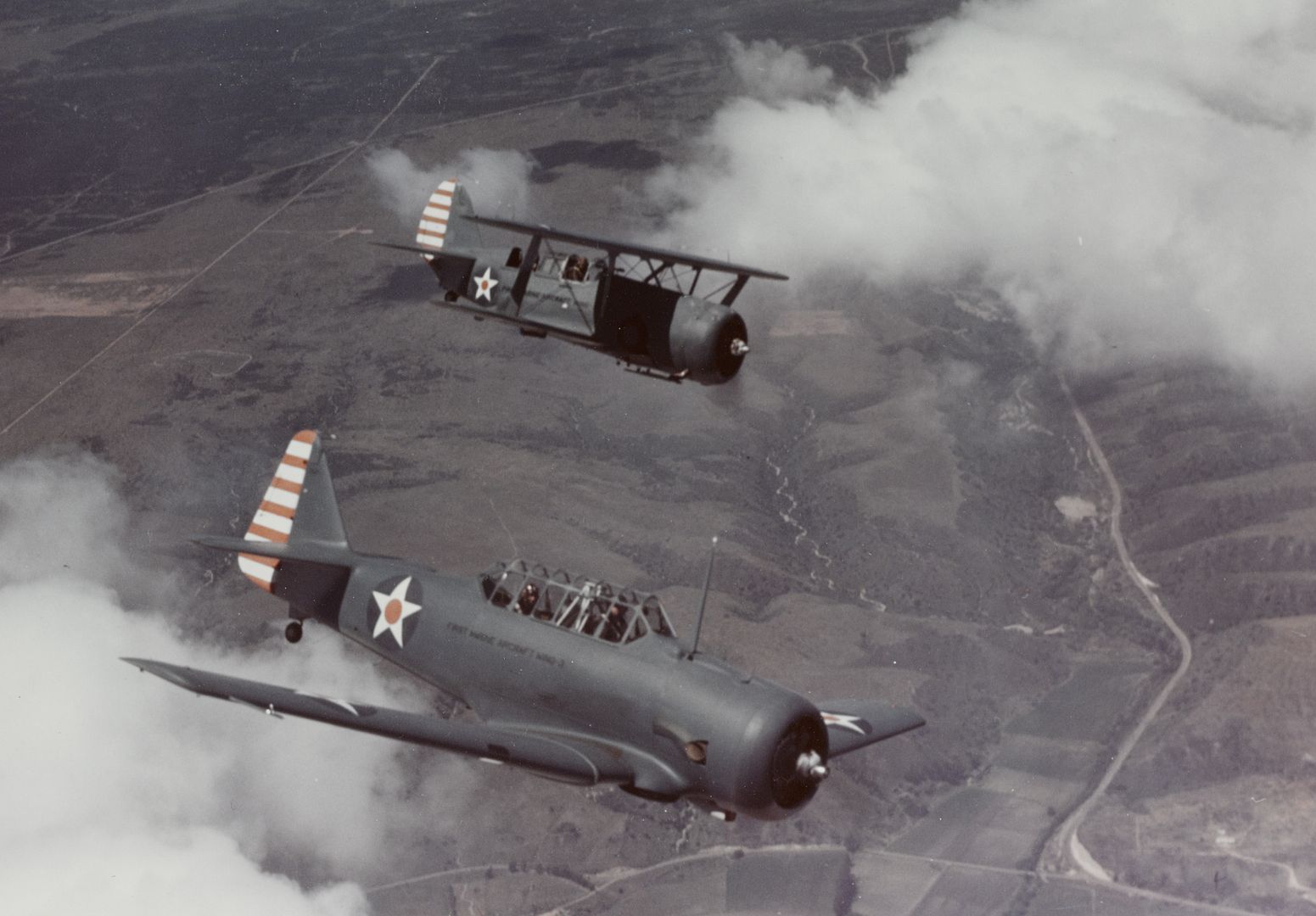
SNJ-5 trainer in flight near Naval Air Station Atlantic City circa 1945.
Post a reply
- Go to Previous topic
- Go to Next topic
- Go to Welcome
- Go to Introduce Yourself
- Go to General Discussion
- Go to Screenshots, Images and Videos
- Go to Off topic
- Go to Works in Progress
- Go to Skinning Tips / Tutorials
- Go to Skin Requests
- Go to IJAAF Library
- Go to Luftwaffe Library
- Go to RAF Library
- Go to USAAF / USN Library
- Go to Misc Library
- Go to The Ops Room
- Go to Made in Germany
- Go to Campaigns and Missions
- Go to Works in Progress
- Go to Juri's Air-Raid Shelter
- Go to Campaigns and Missions
- Go to Works in Progress
- Go to Skinpacks
- Go to External Projects Discussion
- Go to Books & Resources
